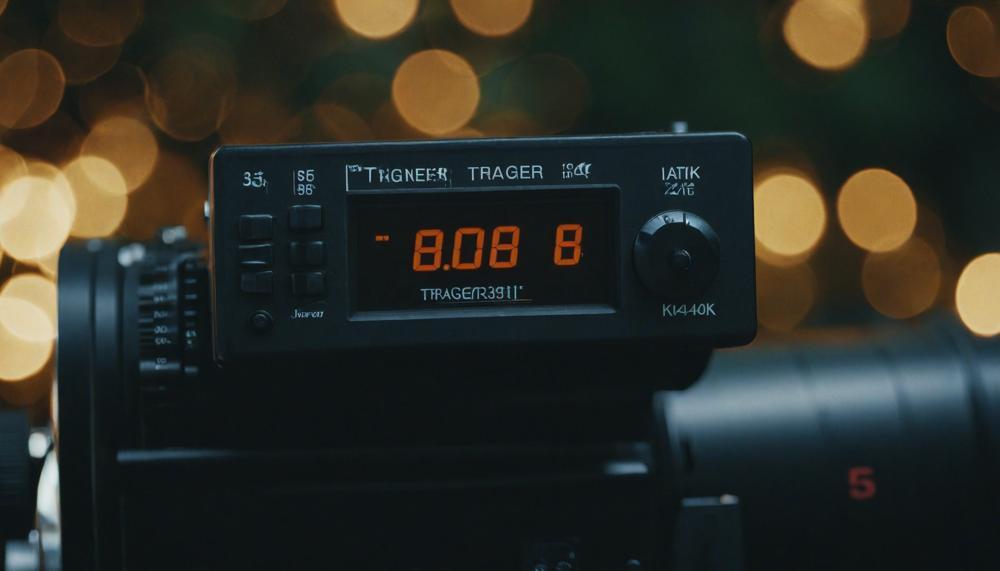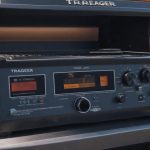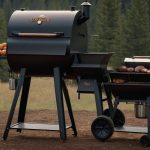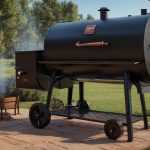Did you know that a significant number of outdoor cooking enthusiasts frequently encounter issues with their grills not keeping the heat steady? Particularly for those who use Traeger grills, this is a surprisingly common hiccup, affecting nearly 20% of users at some point.
Despite Traeger’s reputation for quality and innovation in wood pellet grilling technology, fluctuations in temperature remain a top concern that can turn a promising barbecue into a culinary guessing game.
When your grill doesn’t hold a steady temperature, the consequences can range from undercooked meats to an unsatisfying delay in getting that perfect sear on your steak.
But what causes these fluctuations, and more importantly, how can you fix them? Understanding the roots of this problem is crucial for any griller aiming to master the art of barbecue.
Here’s what we’ll cover:
- The primary reasons why temperature inconsistencies occur in pellet grills
- Practical steps to diagnose and fix the common triggers of these issues
- Tips to enhance the reliability of your Traeger grill for a flawless cooking experience
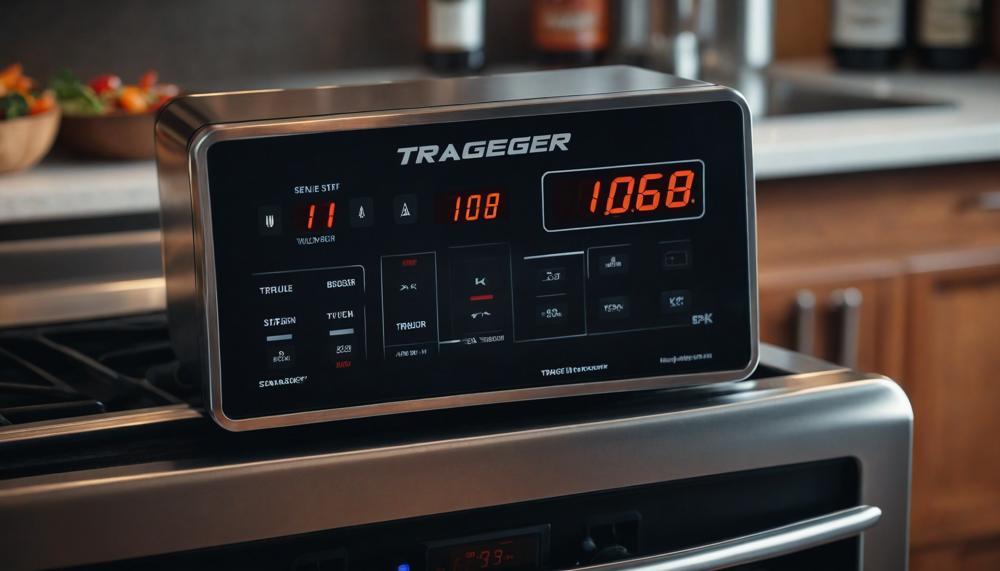
Contents
Is There a Temp Error Code Showing on the Control Board Screen?
If your Traeger grill is flashing a temperature error code on its control board screen, it might be grappling with a few common issues. These glitches can range from simple maintenance needs to more intricate hardware malfunctions. Below is a detailed breakdown of potential causes, helping you pinpoint and resolve the problem swiftly.
| Possible Issue | Description | Troubleshooting Tips |
| Temperature Swings | These fluctuations can cause the grill to register a temp error if the internal temperature becomes inconsistent. | Monitor the grill for stability and consider sheltering the grill from direct wind or extreme weather. |
| Low-Temperature Error (LEr) | This specific code signals that the grill’s temperature has dropped below 125°F, usually because it has turned off unexpectedly or is unable to maintain the set heat. | Ensure the hopper is filled with high-quality pellets and check for any blockages or jams that could affect fuel delivery. |
| Component Failure | Key components such as the RTD probe or the induction fan might be faulty or damaged, leading to incorrect temperature readings. | Inspect these parts for visible damage or wear and consult the user manual or customer service for replacement advice. |
| Poor Quality Fuel | Bad pellets or improper pellet storage can result in inadequate heat production and temperature errors. | Only use high-quality, dry pellets and store them in a moisture-free environment to prevent degradation. |
| Power Supply Issues | An unstable power connection can lead to erratic grill behavior and temperature discrepancies. | Check your grill’s power cord and outlet for any signs of damage or loose connections and ensure a stable power supply. |
Each of these issues can disrupt your BBQ plans, but with proper maintenance and troubleshooting, you can get back to grilling without further hitches.
Traeger Not Hot – Maintenance/Procedure and Product Issues
| Issue | Description | Solution |
|---|---|---|
| Poor Quality Pellets | Using low-grade or damp wood pellets can impede the heat output. | Always opt for high-quality, dry pellets to ensure efficient burning and consistent heat. |
| Blocked Auger | Pellet jams in the auger can stop the flow to the burn pot, affecting temperature. | Regularly inspect and clean the auger to prevent and clear jams. |
| RTD Probe Issues | A faulty or dirty RTD (Resistance Temperature Detector) probe can lead to inaccurate temperature readings. | Clean the RTD probe gently with a soft cloth; replace if damaged or consistently inaccurate. |
| Improper Startup Procedure | Not following the model-specific startup steps can cause temperature irregularities. | Refer to the user manual to execute the correct startup process for your model. |
| External Weather Conditions | Cold wind or ambient temperatures can lower the grill’s internal temperature. | Use a wind guard or insulating cover to stabilize the temperature in adverse weather conditions. |
| Insufficient Power Supply | Adequate electrical power is essential for optimal operation and heating. | Ensure your grill is connected to a stable and sufficient power source. |
Maintaining the proper function of your Traeger grill involves addressing these common issues. Regular maintenance and adhering to correct procedures play a pivotal role in ensuring that your BBQ sessions are both delightful and delicious.
Traeger Not Hot – Environmental/Faulty Internal Components
| Environmental Factors | Faulty Internal Components |
| Weather conditions, such as wind or extreme cold, can affect the internal temperature of a Traeger grill. This can be mitigated by using a grill cover or placing the grill in a sheltered area. | The RTD probe, which measures the temperature of the grill, may become damaged or faulty over time. This can cause incorrect readings and lead to temperature fluctuations. |
| Power supply issues, such as low voltage or tripped breakers, can also impact the heating capabilities of a Traeger grill. Make sure to use a reliable power source and check for any electrical issues if your grill is not heating properly. | The auger, which feeds the pellets into the firepot, can become clogged or damaged, affecting the flow of pellets and causing temperature issues. Regular cleaning and inspection of this component is recommended. |
| Using low-quality or improperly stored wood pellets can also lead to temperature problems. Moisture and debris in the pellets can affect their burning efficiency and result in inconsistent heating. | The hot rod, responsible for igniting the pellets in the firepot, can wear out over time and may need to be replaced if it is not heating properly. Regular cleaning can help extend its lifespan. |
| The control board, which regulates the temperature and other functions of the grill, can malfunction due to electrical issues or wear and tear. Replacement may be necessary if this component is causing temperature problems. |
So, common environmental factors that can affect the temperature of a Traeger grill include weather conditions and power supply issues. However, faulty internal components such as the RTD probe, auger, hot rod, and control board can also contribute to heating problems. It is important to regularly clean and inspect these components to ensure proper functioning and prevent temperature fluctuations.
Dirty or Faulty Rtd Probe
Possible reasons for a Traeger not maintaining temperature include error codes, low-quality pellets, incorrect start-up processes, inadequate power supply, weather conditions, and lack of maintenance.
A dirty or faulty RTD probe can contribute to these issues by providing inaccurate readings or obstructing pellet feeding.
Jammed Auger
The auger in a Traeger grill can become jammed due to various reasons such as poor weather conditions, buildup of ash and debris in the firepot, and low-quality or moist wood pellets. This can lead to temperature fluctuations and hinder the overall grilling experience. To fix this issue and maintain proper temperature, it is important to troubleshoot the cause and take necessary steps.
One common cause of a jammed auger is poor weather conditions. Cold temperatures can cause the grease in the auger to solidify, making it difficult for the auger to turn and feed pellets properly. In this case, using an insulating blanket or keeping the grill in a sheltered area can help prevent this issue.
Another factor that can lead to a jammed auger is a buildup of ash and debris in the firepot. This can occur if the grill is not cleaned regularly or if low-quality pellets are used. To fix this, it is important to regularly clean the firepot and use high-quality hardwood pellets.
Moisture in wood pellets can also cause them to expand and create blockages in the auger. To prevent this, it is important to store pellets properly in a dry location.
In addition to these steps, it is also important to check for any power supply issues or firmware updates that may need to be addressed. If these troubleshooting steps do not work, manually clearing the auger or replacing the motor pin may be necessary.
To prevent future issues with the auger, regular maintenance and cleaning of the grill are crucial. This includes cleaning the firepot, checking for any damaged parts, and ensuring proper storage of wood pellets.
In conclusion, a jammed auger in a Traeger grill can be caused by various factors such as weather, buildup of ash and debris, and low-quality pellets.
Traeger Warranty Policy Notes
Traeger offers a comprehensive warranty policy for all of their grill models, providing peace of mind for customers. The warranty period for Traeger grills is three years, ensuring that any manufacturing defects or malfunctions are covered during this time. However, it is important to note that consequential damages, such as physical damage or misuse, may affect the coverage of the warranty.
In terms of maintaining temperature, the warranty policy can be helpful in troubleshooting issues that may arise. If a customer experiences temperature fluctuations or other issues related to maintaining temperature within the first three years of owning a Traeger grill, they can reach out to Traeger for assistance. This may include troubleshooting steps or even replacement parts if necessary.
Additionally, being aware of the warranty policy can also help customers make informed decisions when it comes to maintaining their Traeger grill. By understanding what is covered and what may void the warranty, customers can take appropriate precautions and avoid potential issues with their grill. This can include regular cleaning and using high-quality pellets to prevent jamming and maintain proper temperature.
Ultimately, the Traeger warranty policy serves as a testament to the brand’s commitment to providing high-quality and reliable grills for their customers.
Conclusion
In conclusion, temperature inconsistencies in Traeger grills are a common issue that can affect the overall grilling experience. Despite Traeger’s reputation for quality and innovation, fluctuations in temperature remain a top concern for many outdoor cooking enthusiasts. Through this article, we have explored the primary reasons behind these temperature fluctuations and practical steps to diagnose and fix them. We have also discussed tips to enhance the reliability of your Traeger grill for a flawless cooking experience.
From environmental factors such as weather conditions to faulty internal components like the RTD probe and auger, there are various potential causes of temperature issues in Traeger grills. It is essential to regularly maintain and clean your grill, use high-quality pellets, and follow correct start-up procedures to prevent these issues from arising. Additionally, being aware of Traeger’s comprehensive warranty policy can help troubleshoot any unexpected problems.
In today’s competitive digital world, it is crucial to stay informed and make informed decisions when it comes to your grilling equipment. By understanding the root causes of temperature inconsistencies in Traeger grills, you can confidently explore the world of wood pellet grilling without worrying about pesky temperature fluctuations.

